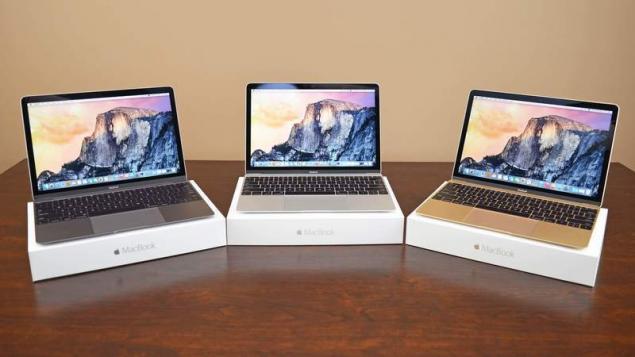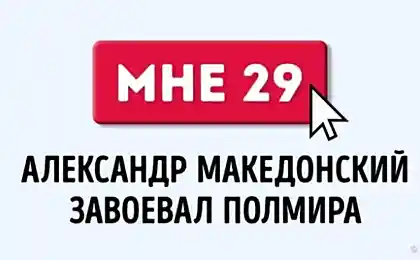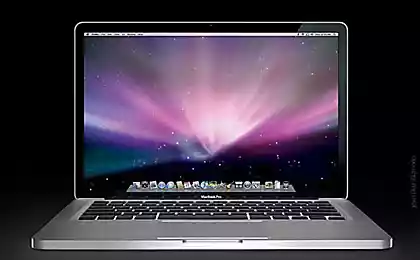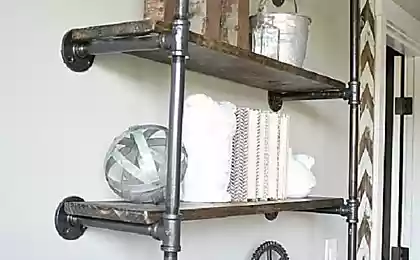421
Laptops in 2017 will be up to 2 times more energy-efficient
A major problem of modern portable electronics is short battery life. Laptops present in the market, able to survive on a single charge from 1 to 10-12 hours.

A consequence of low autonomy is the frequent recharging of the batteries, which they quickly degrade. This leads to the fact that manufacturers are forced to make more batteries, which has a negative impact on the environment. Also, the acute problem of disposal of spent batteries.
New and effective
Currently available are laptops, processors which are manufactured according to the processes 22, 16 and 14 nanometers. The most energy-efficient laptop Apple (MacBook 12") created by process technology 14 nm. However, in 2017 things will change.

At the end of 2016, many manufacturers planned transition to finer process technology is 10 nm. Intel, the largest manufacturer of processors, has announced that the first production samples of 10-nanometer crystals appear in the 3 quarter of 2016, and devices with them will go on mass sale in early 2017. Samsung representatives back in the spring reported that factory for the production of 10-nanometer silicon chips will start by the end of the year.
AMD (the second largest manufacturer of x86 processors for personal computers and laptops) even stated that after 14 nm (which is already implemented) just skip to 7 nm. Taiwan's largest chip maker TSMC (among his clients – Nvidia, MediaTek, AMD, and other companies) decided to go ahead. In the 1st quarter of 2017 start of full production of 14 nm chips, and the currently developing technology of 5 nm. A full launch of the plant for their release should be held before 2020. Notebooks created with the use of such components will be able to work up to 3-5 times longer than current models now.

The benefits of the transition
The transition to the new chips created according to the process 10 nm will reduce energy consumption by up to 2 times, compared to 22 nm. Processors is created with its use, became the most massive in 2016. On the background of 14 and 16 nm, the reduction of consumption will not be so noticeable, but in that comparison, the difference reaches 20-30 %.
The use of energy-efficient processors, developed under the new production standards, will significantly extend the battery life when using batteries of the same capacity. If manufacturers want to make new laptops are thinner and lighter – they will be able to achieve this by reducing the capacity of the battery, without reducing the operation time. In any case, so it will be made a tangible contribution to saving natural resources.
Another positive point is the increase in the number of crystals obtained with one of the silicon workpiece. In the long term this will lead to decrease consumption of this mineral, as well as to reduce energy costs and emissions per unit of output. Thus, despite the high cost of implementation technology, the new processors for laptops should not appreciably add to the cost. published
Source: facepla.net/the-news/5516-%D0%BD%D0%BE%D1%83%D1%82%D0%B1%D1%83%D0%BA-2017.html

A consequence of low autonomy is the frequent recharging of the batteries, which they quickly degrade. This leads to the fact that manufacturers are forced to make more batteries, which has a negative impact on the environment. Also, the acute problem of disposal of spent batteries.
New and effective
Currently available are laptops, processors which are manufactured according to the processes 22, 16 and 14 nanometers. The most energy-efficient laptop Apple (MacBook 12") created by process technology 14 nm. However, in 2017 things will change.

At the end of 2016, many manufacturers planned transition to finer process technology is 10 nm. Intel, the largest manufacturer of processors, has announced that the first production samples of 10-nanometer crystals appear in the 3 quarter of 2016, and devices with them will go on mass sale in early 2017. Samsung representatives back in the spring reported that factory for the production of 10-nanometer silicon chips will start by the end of the year.
AMD (the second largest manufacturer of x86 processors for personal computers and laptops) even stated that after 14 nm (which is already implemented) just skip to 7 nm. Taiwan's largest chip maker TSMC (among his clients – Nvidia, MediaTek, AMD, and other companies) decided to go ahead. In the 1st quarter of 2017 start of full production of 14 nm chips, and the currently developing technology of 5 nm. A full launch of the plant for their release should be held before 2020. Notebooks created with the use of such components will be able to work up to 3-5 times longer than current models now.

The benefits of the transition
The transition to the new chips created according to the process 10 nm will reduce energy consumption by up to 2 times, compared to 22 nm. Processors is created with its use, became the most massive in 2016. On the background of 14 and 16 nm, the reduction of consumption will not be so noticeable, but in that comparison, the difference reaches 20-30 %.
The use of energy-efficient processors, developed under the new production standards, will significantly extend the battery life when using batteries of the same capacity. If manufacturers want to make new laptops are thinner and lighter – they will be able to achieve this by reducing the capacity of the battery, without reducing the operation time. In any case, so it will be made a tangible contribution to saving natural resources.
Another positive point is the increase in the number of crystals obtained with one of the silicon workpiece. In the long term this will lead to decrease consumption of this mineral, as well as to reduce energy costs and emissions per unit of output. Thus, despite the high cost of implementation technology, the new processors for laptops should not appreciably add to the cost. published
Source: facepla.net/the-news/5516-%D0%BD%D0%BE%D1%83%D1%82%D0%B1%D1%83%D0%BA-2017.html
Estream: portable hydroelectric power plant in a backpack
Replaceable school: how to help your child adapt























